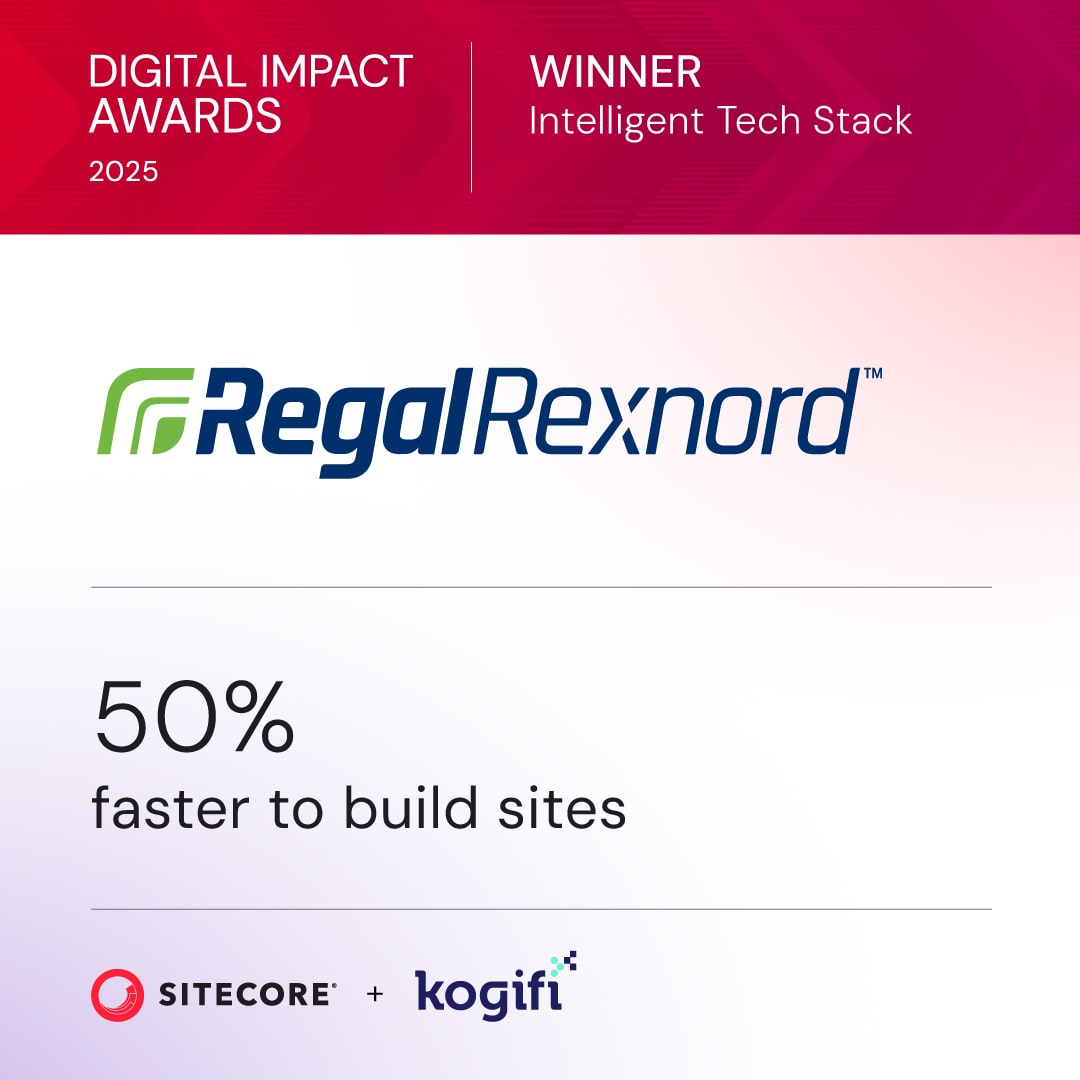Emotional design in CMS platforms is about creating positive, memorable experiences for users by focusing on how they feel during interactions. This approach goes beyond functionality, leveraging user psychology and emotional triggers to drive engagement, loyalty, and satisfaction. Platforms like Sitecore, Adobe Experience Manager (AEM), and SharePoint integrate emotional design principles to improve usability, personalization, and user connections.
Key Takeaways:
- What is Emotional Design? It emphasizes user emotions in digital interactions, aiming to create memorable experiences.
- Why It Matters: Emotionally connected users are 52% more valuable and 71% more likely to recommend a brand.
- Core Principles: Focus on user needs, intuitive navigation, visual appeal, personalization, and consistent experiences across channels.
- Platform Highlights:
- Sitecore: Advanced personalization tools, marketing automation, and seamless user experiences.
- AEM: Tailored content at scale with tools like Experience Fragments and AI-driven personalization.
- SharePoint: Enhanced collaboration and user-centric internal systems.
- Measuring Success: Use emotional engagement metrics, A/B testing, and user feedback to refine experiences.
Emotional design transforms routine CMS interactions into meaningful connections, driving business outcomes like higher retention, advocacy, and productivity. Whether for internal systems or customer-facing platforms, investing in emotional design ensures your CMS resonates with users on a deeper level.
Don Norman: Emotional Design
Core Principles of Emotional Design for CMS Platforms
Creating emotional connections through enterprise CMS platforms takes a thoughtful approach rooted in established design principles. These elements work together to turn ordinary interactions into meaningful experiences that resonate with users on a deeper level.
User-Focused Design
The foundation of emotional design lies in understanding what users need, how they behave, and what triggers their emotions. Research-driven insights - like A/B testing, which can increase conversion rates by 30%, and findings that show 76% of users prefer smooth, intuitive navigation - help shape content and interface design. Speed matters too: 53% of mobile users abandon sites that load too slowly, and even a 100-millisecond delay can reduce conversions by 7%.
"Design is really an act of communication, which means having a deep understanding of the person with whom the designer is communicating." – Don Norman
Identifying key emotional touchpoints is crucial. These are moments in the user journey where emotions intensify, such as logging into a new Sitecore platform for the first time, finding exactly what they need, or completing a challenging task. By mapping these moments, designers can create features that enhance positive emotions and reduce frustration.
Accessibility and inclusivity are also vital. When platforms cater to diverse abilities and needs, users feel valued and included, which strengthens their bond with both the platform and the brand.
Once user needs are well understood, visual and interaction design can bring these insights to life, creating immediate emotional connections.
Visual and Interaction Design
Visuals have a powerful impact, often sparking emotional responses within 0.05 seconds. Strategic choices - like the vibrant colors in the iMac G3 relaunch, which helped increase Apple’s sales by 24% - can make a big difference. Clear typography and generous white space improve readability by up to 20%, while animations and tutorial videos (which generate 94% more views) enhance trust and engagement.
Micro-interactions are another key element. These small, thoughtful touches - like progress animations when uploading a file to SharePoint or instant feedback when saving content in Sitecore - make systems feel responsive and relatable. These moments, though brief, leave users feeling satisfied and in control.
Interactive features also play a significant role. Dashboards, drag-and-drop tools, and real-time collaboration options can boost engagement rates by as much as 50% compared to static content. The goal is to make these interactions intuitive and responsive, ensuring they evoke positive emotions through smooth and enjoyable user experiences.
Personalization takes this emotional connection further by tailoring content to individual users, making them feel understood and appreciated.
Personalization and AI Integration
Modern CMS platforms use AI to create personalized experiences that drive results. Personalization can increase revenue by 40% and meets the expectations of 71% of users who want tailored interactions. By analyzing user behavior and preferences, AI fine-tunes messaging and ensures a consistent experience across channels. For instance, tools in Sitecore and Adobe Experience Manager dynamically adjust content, making users feel recognized and valued.
Sitecore excels in personalization, offering advanced features like marketing automation, A/B testing, analytics, and machine learning-based audience segmentation. One user shared:
"Sitecore really helps us to provide a customized and personalized experience for our website users across various channels and efficiently create and manage our digital web content for marketing purposes." – Application Development Senior Analyst, Mid-Market enterprise
Adobe Experience Manager (AEM) empowers teams to create tailored content at scale with tools like Experience Fragments and Adobe Sensei GenAI. A software engineer explained:
"AEM has helped me by providing centralized content management, enabling personalized experiences, facilitating multi-channel delivery, streamlining workflow and collaboration, offering powerful analytics and optimization capabilities, ensuring scalability, and integrating seamlessly with the Adobe ecosystem." – Mid-market enterprise software engineer
Personalization goes beyond just delivering relevant content. AI can adjust tone, timing, and format to evoke positive emotions based on user preferences and behavior. This ensures that every interaction feels meaningful and thoughtfully designed.
Omnichannel consistency is key here. AI-driven personalization ensures users experience seamless, emotionally engaging interactions across mobile apps, websites, and integrated systems. The data speaks for itself: 76% of customers feel frustrated without tailored experiences, and 61% are willing to pay more for a great customer experience. Together, these elements create cohesive, emotionally engaging journeys that boost user satisfaction and drive business success.
Emotional Design in Sitecore, Adobe Experience Manager, and SharePoint

After covering the basics of emotional design, let’s dive into how three major CMS platforms - Sitecore, Adobe Experience Manager (AEM), and SharePoint - apply these principles. These platforms are designed to turn routine digital interactions into meaningful, engaging experiences that connect with users and deliver measurable business outcomes.
Customizing UX/UI for Emotional Impact
Sitecore is known for its powerful personalization tools that are built directly into the platform. It offers features like advanced marketing automation, A/B testing, multivariate testing, analytics, and machine learning-based segmentation - all available without requiring additional software. This streamlined approach makes it easier to create experiences that resonate on an emotional level. For example, organizations using Sitecore XM Cloud have reported faster page loads and noticeable boosts in user engagement. These improvements contribute to smoother, more positive user interactions, which naturally evoke better emotional responses.
Adobe Experience Manager (AEM) takes personalization to the next level with its Experience Fragments feature. This tool allows content teams to create tailored content variations for different audience segments, enabling them to design emotionally impactful touchpoints that feel relevant to users. The ability to quickly deploy these variations ensures that businesses can respond to opportunities in real time, delivering meaningful experiences when they matter most.
SharePoint, on the other hand, emphasizes collaboration and community-building through its modern templates and social integration features. With updated site designs that include intuitive navigation, corporate branding options, and customizable themes, SharePoint helps foster emotional connections among employees. By focusing on user needs and avoiding generic templates, businesses can ensure their designs meet emotional expectations, creating a more engaging workplace experience.
These platforms demonstrate how tailored interface designs can set the stage for deeper emotional connections, which are further enhanced by their personalization engines.
Using Personalization Engines
Personalization is a key component of emotional design, as it helps users feel understood and valued. Sitecore's personalization engine integrates directly with its content management system, allowing teams to deliver customized experiences without juggling multiple tools.
AEM, backed by the extensive Adobe ecosystem, supports enterprise-level, multi-channel personalization. While Sitecore embeds its personalization tools directly, Adobe offers these features as modular components, giving businesses flexibility in how they implement them.
For SharePoint, personalization is centered around internal communications and workplace collaboration. It excels at creating tailored employee experiences that enhance engagement and productivity, making it an essential tool for fostering emotional connections within organizations.
These personalization tools are critical for supporting broader omnichannel strategies that ensure consistent emotional engagement across all touchpoints.
Omnichannel Strategies for Consistent Engagement
Emotional design doesn’t stop at a single channel. To truly connect with users, businesses need to deliver consistent, emotionally engaging experiences across all digital touchpoints. Research shows that omnichannel campaigns achieve an 18.96% engagement rate compared to just 5.4% for single-channel efforts. Additionally, companies with strong multichannel strategies retain 89% of their customers, compared to only 33% for those that don’t.
Sitecore excels in omnichannel delivery by integrating analytics and personalization tools to maintain emotional consistency across platforms like mobile apps, websites, and more. As Sitecore explains:
"Omnichannel customer experience means streamlining all the customer interactions across multiple channels to deliver a seamless customer experience".
Adobe Experience Manager leverages its ecosystem to support omnichannel strategies, ensuring consistent experiences across diverse channels. Kevin Lindsay, Director of Product Marketing at Adobe, puts it this way:
"We achieve a business outcome by listening, collecting knowledge, and delivering a consistent experience. And we do that across any channel, any touchpoint, and with every interaction".
AEM also excels at managing and delivering assets to different audiences while maintaining emotional consistency, which is key to building trust and engagement.
For SharePoint, omnichannel capabilities are particularly strong in internal and external communications. By integrating with other Microsoft tools, SharePoint enhances marketing functionalities and ensures consistent experiences across the Microsoft ecosystem. In some cases, these platforms can even work together - Sitecore, for instance, can extend SharePoint’s content by repurposing it for web delivery.
Considering that 87% of customers expect personalized and consistent experiences across all channels, it’s clear that emotional design must prioritize seamless engagement. Whether through Sitecore’s integration, AEM’s ecosystem, or SharePoint’s collaboration features, the goal remains the same: to create experiences that feel natural, connected, and emotionally engaging across every interaction.
sbb-itb-91124b2
Measuring and Improving Emotional Engagement in CMS Projects
After delving into CMS design principles, it’s clear that maintaining and fine-tuning emotional engagement is just as important as creating it in the first place. Unlike traditional analytics that focus on clicks or conversions, emotional engagement dives deeper - it’s about understanding how users feel while interacting with CMS-driven experiences.
Analyzing User Feedback and Behavior
To measure emotional engagement, blending quantitative data with qualitative insights is key. Experts define emotional design metrics as “quantitative and qualitative parameters that assess the emotional responses elicited by a digital product”. This means tracking emotions like joy, frustration, trust, and curiosity alongside standard performance metrics.
Sometimes, behavioral data can uncover patterns that typical analytics miss. For instance, a user spending more time on a page might not be a sign of interest - they could be confused or struggling to find what they need. That’s where sentiment analysis comes in, turning “raw emotional data into structured insights that UX professionals can act on”.
Modern CMS platforms, such as Sitecore, Adobe Experience Manager, and SharePoint, provide advanced analytics that reveal deeper engagement patterns. These tools can track how users navigate content, where they pause, and what triggers them to take action. Pairing this data with surveys, interviews, and usability studies gives a fuller picture of user emotions.
To better understand engagement, focus on three levels:
- Awareness: Metrics like page views, video plays, and click-through rates.
- Attraction: Indicators such as bounce rates, session lengths, and pages per visit.
- Investment: Actions like subscriptions, downloads, conversions, and community sign-ups.
For example, a travel company used customer personas and integrated CRM data to streamline their customer service process. By doing so, they cut call durations by 33% and saved millions. Insights like these pave the way for targeted A/B testing of emotional design elements.
A/B Testing Emotional Design Elements
Once you’ve gathered user feedback, A/B testing can help identify which design elements strengthen emotional engagement. As aviation engineer Burt Rutan once said, “Testing leads to failure, and failure leads to understanding”. This highlights that while A/B testing shows what works, it doesn’t always reveal why users feel more connected.
When testing emotional design, focus on elements that directly influence user feelings. Experiment with variables like color schemes, typography, imagery, or interaction patterns. For instance, you could test if warmer colors in your CMS interface make users feel more welcomed, or if a specific button style builds trust.
However, A/B testing alone won’t uncover the emotional drivers behind user behavior. That’s where qualitative research - like user interviews, usability testing, and surveys - becomes essential. These methods help explain the “why” behind the numbers. To ensure accuracy, test one design element at a time; changing multiple elements simultaneously can make it hard to pinpoint what’s driving the results.
It’s also important to recognize that emotional responses vary across different user segments. Tailoring experiences to specific customer personas has been shown to be up to five times more effective.
Ethical Considerations in Emotional Design
As with any design approach, ethics play a critical role in emotional engagement. Emotional design walks a fine line - it can create meaningful connections, but it also carries the risk of manipulation. The goal should always be to serve users’ needs, not exploit their feelings for business gains.
Transparency is essential. Research shows that when users are clearly informed about how their emotional data is collected and used, it builds trust and encourages genuine interactions. At the same time, emotional data often involves more sensitive information than standard analytics. Protecting user privacy requires secure data systems that separate sensitive emotional metrics from general performance data.
Authenticity is equally important. Instead of designing interactions to manipulate emotions, aim for genuine connections that align with users’ goals.
Inclusivity also plays a key role in emotional design. Thoughtful design ensures that emotional experiences resonate with diverse audiences. For example, Microsoft’s Xbox Adaptive Controller features a simplified interface and multiple input ports for assistive devices, making it accessible to users with varying needs.
Finally, regular evaluation is necessary to uphold ethical standards. Continuously review your design choices against user behavior, and be ready to adjust based on new insights. The ultimate test of ethical emotional design is this: does the experience help users achieve their goals while leaving them with a positive impression? If the answer is yes, you’re on track. If not, it’s time to rethink your approach.
Kogifi's Expertise in Emotional Design for Enterprise CMS

Bringing emotional design into enterprise CMS platforms isn't something that happens by accident - it requires a solid strategy and specialized skills. That’s where Kogifi excels. With over a decade of experience and a team of 80+ experts, they’ve built a reputation for aligning design with measurable emotional impact. Their work spans platforms like Sitecore, Adobe Experience Manager, and SharePoint, making them a go-to for businesses seeking to elevate their digital experiences.
As an official partner for Adobe and Microsoft, as well as a Sitecore Silver Partner, Kogifi combines technical know-how with a user-first design approach to craft digital experiences that resonate emotionally. Their team of 25 certified Sitecore developers ensures that emotional design is seamlessly integrated into platform architecture. Let’s dive into how Kogifi achieves this through custom UX/UI design, AI personalization, and ongoing optimization.
Custom UX/UI Design for Emotional Engagement
Kogifi’s UX/UI design process is all about building meaningful connections between users and content. They focus on creating designs that don’t just look good but also feel right, offering an experience that resonates with users on an emotional level.
Take the British Council's IELTS website, for example. Back in 2020, www.ielts.org faced challenges with accessibility, responsiveness, and outdated design trends. Kogifi stepped in with UX research, a complete redesign, development, and rigorous performance testing. The result? A platform that not only met technical benchmarks but also delivered a more satisfying and emotionally engaging user experience.
"The quality of the code has been exceptionally high." - Kogifi Corp
This project highlights Kogifi’s belief that emotional design starts with a strong technical foundation. Their process includes detailed audits and workshops to uncover opportunities for emotional connections within existing CMS setups. These workshops also help organizations understand how emotional design can strengthen audience engagement and boost digital marketing strategies.
Kogifi’s UX design work doesn’t stop at visuals - it extends to the entire user journey. For instance, their collaboration with Grecos transformed complex enterprise interactions into intuitive, emotionally resonant experiences.
AI Personalization and Omnichannel Solutions
Kogifi takes personalization to the next level by using AI to adapt experiences to users’ emotional states and preferences. This goes beyond simple content recommendations, ensuring that every touchpoint feels tailored and meaningful.
Their omnichannel strategies ensure that users experience consistent emotional engagement whether they’re on a website, a mobile app, or an internal collaboration tool. Kogifi’s services - spanning 360 Analytics & CDP, personalization, segmentation, and digital strategy - help maintain emotional continuity throughout the customer journey.
For SharePoint implementations, Kogifi designs platforms that streamline document management and enhance team collaboration. By infusing emotional design principles into these tools, they make internal systems as engaging as customer-facing ones. Meanwhile, their expertise in Adobe Experience Manager allows them to create personalized, data-driven strategies that feel human and emotionally authentic, leveraging AEM’s robust capabilities to their fullest.
The results speak for themselves: Kogifi has achieved a 200% increase in conversion rates for clients by blending technical precision with emotionally intelligent design.
Continuous Optimization and Support
Emotional design isn’t a one-and-done deal - it requires ongoing attention and refinement. Kogifi is committed to continuously improving emotional engagement to keep pace with evolving user expectations and business goals.
Their 24/7 support and hosting services provide the backbone for reliable emotional experiences. Regular platform audits go beyond technical checks, delving into how design elements continue to resonate with users over time. This proactive approach helps prevent engagement drop-offs and supports business growth.
"We lift your business performance with best in class technology and latest UX practices." - Kogifi
Kogifi’s offerings include everything from platform implementations and upgrades to bug fixes, migrations, and outsourcing. Every service is delivered with emotional design in mind, ensuring that technical maintenance enhances rather than detracts from the user experience.
With a track record of implementing enterprise platforms for 15 organizations and serving over 50 clients globally, Kogifi knows that emotional design isn’t a one-size-fits-all solution. Their expertise spans industries and use cases, from digital marketing and omnichannel commerce to productivity platforms and digital asset management.
Conclusion: The Value of Emotional Design in Enterprise CMS Platforms
Emotional design has the power to reshape how enterprise CMS platforms connect with their users. Statistics back this up - emotionally connected customers are not only 52% more valuable but are also 71% more likely to recommend a product. On the flip side, 32% of customers walk away after just one negative experience.
Focusing on emotional design isn't just about aesthetics; it directly impacts business outcomes. Companies that prioritize it see a 20% increase in customer satisfaction and a 15% boost in loyalty. These numbers translate into tangible revenue growth when CMS platforms foster genuine emotional connections through thoughtful, relationship-focused content management.
"People are seeking out products that are not just simple to use but a joy to use." - Bruce Claxton, Professor, Design Management at Savannah College of Art and Design
This approach turns routine digital interactions into memorable moments. Whether it’s navigating the collaboration tools in SharePoint, personalizing content with Sitecore, or managing assets in Adobe Experience Manager, emotional design ensures every interaction feels purposeful and engaging. By blending visual appeal, intuitive usability, and personalized interactivity, it enhances every touchpoint.
For enterprises ready to embrace these benefits, Kogifi offers the expertise to seamlessly integrate emotional design into CMS platforms. Their proven strategies have already delivered measurable success for clients who adopted emotionally driven CMS solutions.
The question isn’t if emotional design will transform your CMS, but when. In an increasingly competitive digital landscape, companies that prioritize emotional connections will stand out. Your CMS isn’t just a tool - it’s a gateway to building meaningful, long-term relationships with your users. Now is the time to act and create experiences that truly resonate.
FAQs
How can emotional design improve user engagement and satisfaction in enterprise CMS platforms?
Emotional design plays a key role in boosting user engagement and satisfaction by creating positive experiences that connect with users on a deeper level. By targeting three emotional processing levels - visceral (how something looks), behavioral (how easy it is to use), and reflective (the personal meaning it holds) - it transforms everyday interactions into more meaningful and enjoyable moments.
For enterprise CMS platforms like Sitecore, Adobe Experience Manager, and SharePoint, incorporating emotional design principles can make interfaces not only more visually appealing but also easier to navigate and more aligned with what users actually need. The result? Users are more likely to engage, return frequently, and build a stronger connection with the platform.
What are emotional touchpoints in a CMS user journey, and how can they be improved?
Emotional touchpoints in a CMS user journey are those moments when users experience emotions - whether it's frustration, satisfaction, or delight - while interacting with the platform. These feelings often arise during key interactions, such as navigating the interface, searching for specific content, or completing tasks.
To make these experiences better, focus on three core areas: personalization, usability, and visual design. For instance, offering content tailored to a user's preferences can bring a sense of satisfaction. Clear, intuitive navigation and immediate feedback can help minimize frustration. And don't underestimate the power of visuals - high-quality images or subtle animations can make the platform feel more engaging and enjoyable.
When you address these emotional touchpoints with care, you’re not just meeting functional needs - you’re creating a CMS experience that resonates with users on a deeper level.
How can businesses evaluate the impact of emotional design in their CMS platforms?
To gauge how emotional design affects their CMS platforms, businesses can dive into both user behavior and emotional feedback. Important metrics to monitor include user satisfaction surveys, behavioral patterns such as time spent on pages and engagement rates, and tools that analyze user emotions during interactions.
On top of that, collecting qualitative feedback about the platform's visual appeal and emotional impact can reveal whether the design creates a positive connection with users. By blending these data points, companies can gain a clearer picture of how emotional design shapes customer engagement and satisfaction.








































